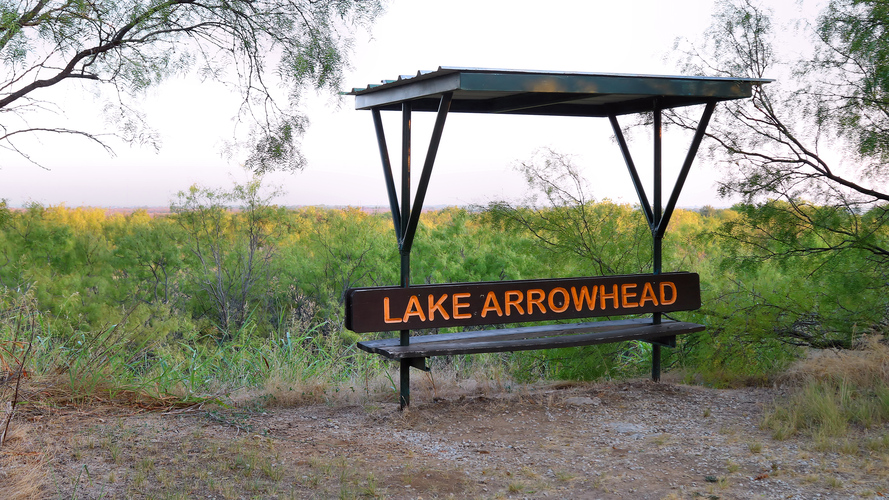Lake Arrowhead State Park’s water level is a critical factor affecting recreational activities, ecosystem health, and local water supply. As of October 3, 2024, the lake stands at 919.83 feet above the National Geodetic Vertical Datum of 1929 (NGVD29), which is approximately 65.4% of its full capacity. This level reflects recent seasonal trends and has significant implications for park visitors, wildlife, and water management strategies.
What is the Current Water Level at Lake Arrowhead State Park?

The current water level at Lake Arrowhead State Park is 919.83 feet above NGVD29, which translates to about 65.4% of its full capacity. This measurement, taken on October 3, 2024, provides a snapshot of the lake’s current state. To put this in perspective:
- Full Capacity: 100%
- Current Level: 65.4%
- Difference: 34.6% below full capacity
This information is crucial for various stakeholders, including:
- Park visitors planning water-based activities
- Local wildlife dependent on the lake ecosystem
- Water management authorities
- Nearby communities relying on the lake for water supply
How Does the Water Level Compare to Historical Data?

Analyzing historical data reveals interesting patterns in Lake Arrowhead’s water levels:
| Date | Water Level (% Full) |
|---|---|
| October 3, 2024 | 65.4% |
| August 29, 2024 | 68.4% |
| June 29, 2024 | 76.4% |
| March 29, 2024 | 55.4% |
| September 29, 2023 | 55.5% |
These figures demonstrate:
- A slight decrease over the past month
- Higher levels during summer months
- Lower levels in spring
- Year-over-year variations
Understanding these trends is essential for:
- Long-term water resource planning
- Predicting future water availability
- Assessing the impact of climate patterns on the lake
What Factors Influence Lake Arrowhead’s Water Level?
Several factors contribute to the fluctuations in Lake Arrowhead’s water level:
- Precipitation: Rainfall and snowmelt are primary sources of water input.
- Evaporation: Higher temperatures increase water loss through evaporation.
- Water Usage: Human consumption and irrigation affect water levels.
- Seasonal Changes: Different seasons bring varying amounts of precipitation and evaporation rates.
- Climate Patterns: Long-term climate trends can impact water levels over extended periods.
Understanding these factors helps in:
- Predicting future water levels
- Implementing effective water management strategies
- Preparing for potential water shortages or excesses
How Does the Water Level Impact Recreational Activities?
The water level at Lake Arrowhead State Park significantly influences various recreational activities:
Fishing
- Lower water levels can concentrate fish, potentially improving catch rates
- Certain fishing spots may become inaccessible due to low water levels
- Fish populations and diversity may be affected by significant level changes
Boating
- Low water levels may expose hazards like submerged rocks or tree stumps
- Some boat ramps might become unusable if water levels drop too low
- Reduced navigable areas during periods of low water
Swimming
- Beach areas may expand or contract based on water levels
- Water quality can be affected, especially in shallow areas during low water periods
- Safety concerns may arise with changing underwater topography
What Are the Environmental Implications of Changing Water Levels?
Fluctuations in Lake Arrowhead’s water level can have profound environmental impacts:
- Shoreline Habitat: Changing water levels affect plants and animals living along the shoreline.
- Aquatic Ecosystems: Fish and other aquatic life may struggle to adapt to significant level changes.
- Water Quality: Lower levels can lead to increased concentration of pollutants and altered water chemistry.
- Wetland Areas: Fluctuating levels impact wetland habitats crucial for many species.
- Erosion: Changing water levels can accelerate shoreline erosion in some areas.
These environmental changes require ongoing monitoring and management to maintain the park’s ecological balance.
How Is the Water Level Monitored and Reported?
Lake Arrowhead’s water level is continuously monitored through a sophisticated system:
- USGS Monitoring: The United States Geological Survey maintains real-time monitoring stations.
- Texas Water Development Board: Provides regular updates on water levels and capacity.
- Frequency: Data is updated daily and made publicly available.
- Reporting Methods: Information is accessible through online platforms and official reports.
This constant monitoring allows for:
- Timely decision-making by water management authorities
- Accurate information for park visitors and local communities
- Long-term data collection for research and planning purposes
What Measures Are in Place to Manage Water Levels?
Several strategies are employed to manage Lake Arrowhead’s water levels:
- Water Release Controls: Regulated outflow to maintain optimal levels.
- Conservation Measures: Implemented during drought conditions to preserve water.
- Inflow Management: Monitoring and managing water sources feeding the lake.
- Public Awareness Campaigns: Educating the public on water conservation.
- Drought Contingency Plans: Prepared strategies for handling prolonged dry periods.
These measures aim to balance:
- Recreational needs
- Environmental conservation
- Water supply requirements for surrounding communities
How Can Visitors Stay Informed About Lake Arrowhead’s Water Level?
Visitors can stay updated on Lake Arrowhead’s water level through various channels:
- Official Website: Regular updates posted on the park’s official site.
- USGS Water Data Portal: Real-time data available for public access.
- Local News Outlets: Often report significant changes in water levels.
- Park Information Centers: Staff can provide current information and forecasts.
- Mobile Apps: Some apps offer real-time water level data for lakes and reservoirs.
Staying informed helps visitors:
- Plan their activities more effectively
- Understand any restrictions or advisories in place
- Contribute to water conservation efforts when necessary
By keeping track of Lake Arrowhead State Park’s water level, visitors, local authorities, and environmental managers can make informed decisions, ensuring the lake remains a vibrant recreational and ecological resource for years to come.
References:
1. Water Data For Texas – Lake Arrowhead
2. USGS Water Data for the Nation – Lake Arrowhead
3. Texas Parks and Wildlife – Lake Arrowhead State Park
